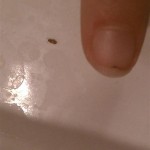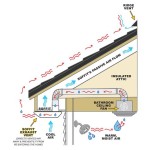How To Remove a Bathroom Sink Stopper Assembly
The bathroom sink stopper assembly, a seemingly simple mechanism, plays a critical role in regulating water flow and maintaining the functionality of the sink. Over time, this assembly can become clogged with hair, soap scum, and other debris, leading to slow drainage or a complete blockage. Furthermore, the stopper itself may become damaged or corroded, necessitating its removal and replacement. This article provides a comprehensive guide on how to safely and effectively remove a bathroom sink stopper assembly.
Before commencing any work on the plumbing system, it is imperative to prioritize safety and proper preparation. This involves gathering the necessary tools and materials, as well as taking precautions to prevent water damage and personal injury. The steps outlined below will ensure a smooth and successful removal process.
Firstly, assemble the required tools. These typically include: adjustable pliers, a basin wrench (also known as a sink wrench), a screwdriver (Phillips or flathead, depending on the specific assembly), a bucket, rags or towels, and potentially, penetrating oil (such as WD-40) to loosen stubborn connections. Having all these tools readily available minimizes interruptions and streamlines the task.
Secondly, prepare the workspace. Place the bucket directly underneath the sink to catch any water that may spill during the disassembly process. Spread rags or towels around the work area to further protect the floor and surrounding surfaces from water damage. Clear any obstructions from beneath the sink to provide ample room for maneuvering tools and accessing the stopper assembly.
Thirdly, shut off the water supply to the faucet. This is a critical step to prevent flooding. Locate the shut-off valves – typically found directly beneath the sink on the supply lines leading to the faucet. Turn both the hot and cold water valves clockwise until they are completely closed. To confirm the water supply is indeed shut off, briefly turn on the faucet. Only a small amount of residual water should flow out.
Understanding the different types of sink stopper assemblies is crucial for selecting the appropriate removal technique. The most common types encountered are pop-up stoppers, lift-rod stoppers, and push-and-seal stoppers. Each design utilizes a unique mechanism to control the opening and closing of the drain, and consequently requires a slightly different approach for removal.
Pop-up stoppers are characterized by a lever or knob, typically located behind the faucet, that connects to a horizontal rod extending to the drain assembly. Activating this lever raises or lowers the stopper, allowing or preventing water from draining. Lift-rod stoppers, as the name suggests, feature a vertical rod that directly lifts the stopper to open the drain. These are often found in older sinks. Push-and-seal stoppers function by pressing down on the stopper itself to seal the drain, and pressing again to release it. These stoppers often have a more streamlined appearance with no external levers or rods.
Removing a Pop-Up Stopper Assembly
The pop-up stopper is arguably the most prevalent type found in modern bathrooms. Its removal involves disconnecting the horizontal rod that actuates the stopper. This process is generally straightforward, but careful attention is needed to avoid damaging the connecting components.
The first step involves locating the pivot rod. This is the horizontal rod extending from the lift rod assembly (the lever behind the faucet) to the drainpipe beneath the sink. Look for a small clevis or spring clip that connects the pivot rod to the vertical lift rod. Disconnect this clevis or clip. Some clips are easily removed by hand, while others may require the use of small pliers or a screwdriver to gently pry them open.
Next, unscrew the pivot nut. This nut secures the pivot rod to the drainpipe. Using adjustable pliers or a basin wrench, carefully loosen the pivot nut by turning it counterclockwise. Be prepared for a small amount of water to leak out as the nut is loosened. Once the nut is sufficiently loose, carefully pull the pivot rod out of the drainpipe. Note the position and orientation of any washers or seals for reassembly later.
With the pivot rod removed, the stopper itself can now be accessed and removed. Depending on the design, the stopper may simply lift out of the drain opening. In some cases, the stopper may be held in place by a small amount of corrosion or debris. Gently wiggle the stopper back and forth while pulling upwards. If the stopper is particularly stuck, consider using penetrating oil to loosen any build-up. Allow the oil to sit for a few minutes before attempting to remove the stopper again.
Finally, access and remove the drain flange. This is the part that remains in the sink basin above. Unscrew it from the drainpipe, using the basin wrench to grip it firmly. Be mindful of any sealant or plumber’s putty that may be present. Clean the area thoroughly after removing the drain flange.
Removing a Lift-Rod Stopper Assembly
The lift-rod stopper, while less common than the pop-up variety, still requires a specific procedure for removal. This type typically features a more direct connection between the lift rod and the stopper itself.
Begin by locating the linkage connecting the lift rod to the stopper. This linkage is usually located directly beneath the sink, where the lift rod extends through the drainpipe. The linkage may consist of a simple screw or a more complex mechanism involving levers or pivots.
Disconnect the linkage. If the linkage is secured by a screw, use the appropriate screwdriver to loosen and remove the screw. If the linkage involves levers or pivots, carefully examine the mechanism to determine how to disengage the connection. Avoid forcing any components, as this could damage the assembly.
Once the linkage is disconnected, the stopper should be free to be removed. As with the pop-up stopper, gently wiggle the stopper back and forth while pulling upwards. If the stopper is stuck, use penetrating oil to loosen any corrosion or debris. Allow the oil to sit for a few minutes before attempting removal.
Finally, remove the drain flange. This is achieved in the same manner as with the pop-up stopper assembly, using a basin wrench to unscrew it from the drainpipe. Ensure the area is thoroughly cleaned before reassembling or replacing any components.
Removing a Push-and-Seal Stopper Assembly
Push-and-seal stoppers are notable for their lack of external levers or rods. Their removal typically involves a twisting or unscrewing action.
First, identify the type of push-and-seal stopper. Some are designed with a removable cap on top of the stopper. If a cap is present, carefully pry it off using a small flathead screwdriver. Be gentle to avoid damaging the cap or the stopper itself.
Next, grip the stopper firmly. Many push-and-seal stoppers are designed to unscrew from the drain assembly. Rotate the stopper counterclockwise while applying gentle upward pressure. If the stopper is particularly stubborn, try using a rubber glove to improve your grip. Apply penetrating oil if needed to loosen any binding.
If the stopper does not unscrew, it may be held in place by internal clips or mechanisms. In this case, carefully examine the stopper for any visible release points or levers. Consult the manufacturer's instructions, if available, for specific removal guidelines.
Lastly, remove the drain flange. Once the stopper is removed, the drain flange can be unscrewed from the drainpipe using a basin wrench. Clean the sink area thoroughly before proceeding.
After removing the stopper assembly, it is essential to inspect the drainpipe for any clogs or obstructions. Use a drain snake or a bent wire to remove any accumulated debris. Flush the drainpipe with hot water to ensure it is clear.
When reinstalling a new or cleaned stopper assembly, be sure to apply plumber’s putty or silicone sealant to the underside of the drain flange to create a watertight seal. Tighten all connections securely, but avoid over-tightening, which could damage the components. Test the new stopper assembly to ensure it functions correctly and does not leak.
By following these detailed instructions, individuals can confidently and safely remove and replace bathroom sink stopper assemblies, resolving drainage issues and maintaining the functionality of their plumbing systems.

How To Replace A Sink Stopper Quick And Simple Home Repair

How To Remove A Sink Stopper With These Easy Steps Phyxter Home Services

How To Remove A Stopper From The Bathroom Sink Family Handyman

Bathroom Sink Drain Stopper Not Working

How To Adjust A Bathroom Sink Pop Up Drain 1 Tom Plumber

How To Replace A Rusty Sink Drain Howtolou Com

Plumbing How Do I Remove The Sink Drain In This Situation Home Improvement Stack Exchange

Quick Tip 26 Pop Up Stopper Sticks Misterfix It Com

How To Fix A Broken Sink Stopper Replacing The Pivot Rod

How To Fix A Stuck Sink Stopper Fast Easy Diy Solutions
Related Posts







